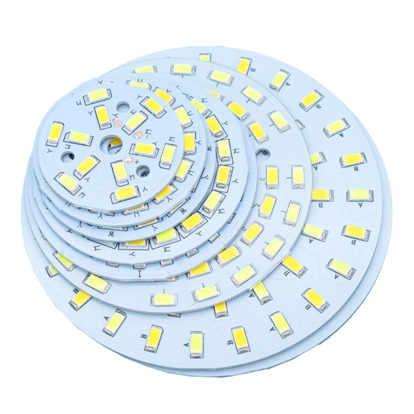LED PCBs
Posted:11:28 AM December 09, 2019
writer: NextPCB
The development of a printed circuit board(PCB) technology provides many chances for the innovation of new products in different areas. Developing PCBs for LED lighting is a typical example. LED PCB is a printed circuit board for light-emitting diode, which causes a disruptive change in the traditional lighting industry. LED lighting is the result of pursuing more efficient and cost-effective lighting solutions.

Why are LED PCBs so popular?
First, soldering the LEDs on the board and the chips will produce light when electricity is connected. The function of adjusting color is easy to be achieved by integrating the LED components with different colors or different color temperatures. Second, the different shapes, materials, and sizes of PCBs can meet diverse lighting requirements, which provides much innovative space for lighting designs and applications.
With these benefits in excellent energy efficiency, maximum design flexibility, longer lifespan, and cost-effectiveness LED lights can be integrated into numerous lighting applications. Applications include street lighting, traffic and signal lighting, high-way tunnel lighting, automotive headlights, lightings in the military field, airport runway landing lights, lighting in hospitals, and many other areas. The LED lights give rise to many kinds of LED PCBs, such as computer LED PCB, automotive LED PCB, telecom LED PCB, medical LED PCB, etc. LED tubes, LED lamps, waterproof LED, LED screens are the most typical products of LED PCBs.
Why is the aluminum PCB the right solution in LED lighting?
PCBs exist everywhere in our daily life from mobile phones to computers to cars with different forms. But not all PCBs are the same. They use different designs, different technology, or different materials to achieve various purposes. The most important thing for LED PCBs is the high heat dissipation capability, which makes designers and engineers consider more about the base material and circuit layout in LED PCBs' design and fabrication.
Among the factors that will influence the PCB’s performance, the base material is one of the most critical factors. As usual, PCB bases include FR-4, epoxy, and metal-core. Because of the low cost, FR-4 and epoxy are the most commonly used when thermal conductivity is not very important. But when thermal conductivity is as important as the function of the product, metal-core PCBs are more favored by engineers. Among them, aluminum PCBs are frequently chosen in LED lighting due to the excellent heat transfer capability and relatively inexpensive price.
Heat transference means the ability of thermal energy moves from one place to another. Aluminum has the best heat transfer ability because it can transfer the heat away from critical parts quickly and minimize the thermal damage to PCB, even the overall products. The reason for the increasing popularity in the LED industry is that aluminum PCB makes LED PCB designs with some incredible improvements and capabilities.
If you are looking for a PCB manufacturer for your next LED project, please contact the online service to get a free quote or some design suggestions. NextTPCB offers full services on PCB design, PCB prototype, component sourcing, and PCB assembly for a variety of LED applications. With years of PCB fabrication experiences, any shape of the LED PCBs could be designed and manufactured by NextPCB to meet customers' different requirements.
 PCB Assembly
PCB Assembly
 Layer Buildup
Layer Buildup
 Online Tools
Online Tools
 PCB Design-Aid & Layout
PCB Design-Aid & Layout
 Mechanics
Mechanics
 SMD-Stencils
SMD-Stencils
 Quality
Quality
 Drills & Throughplating
Drills & Throughplating
 Factory & Certificate
Factory & Certificate
 PCB Assembly Factory Show
Certificate
PCB Assembly Factory Show
Certificate

